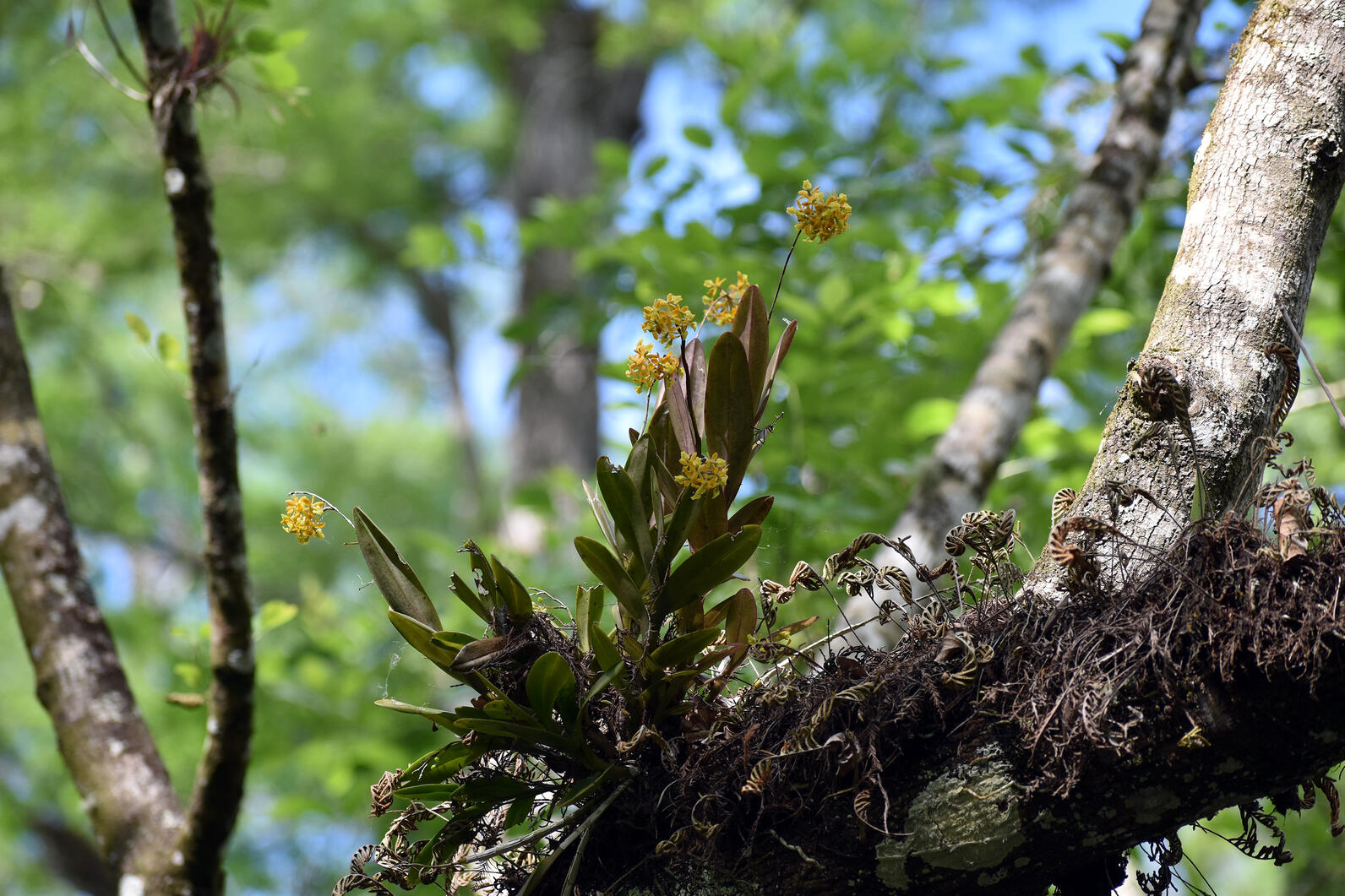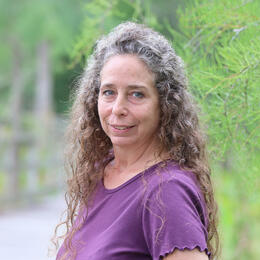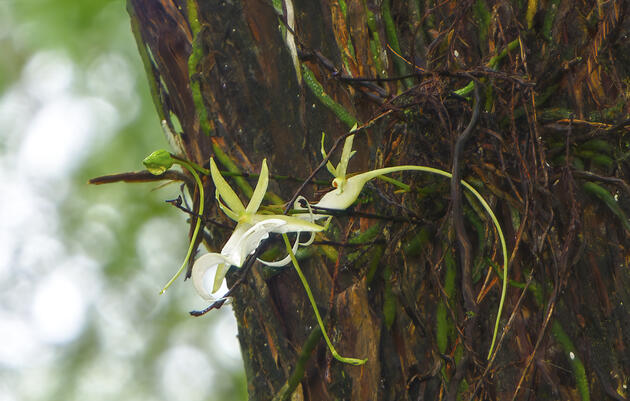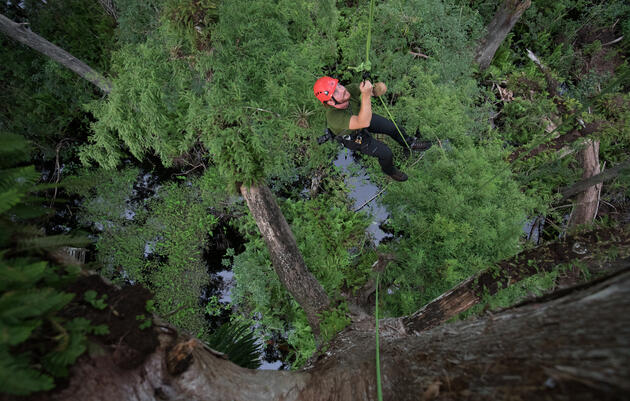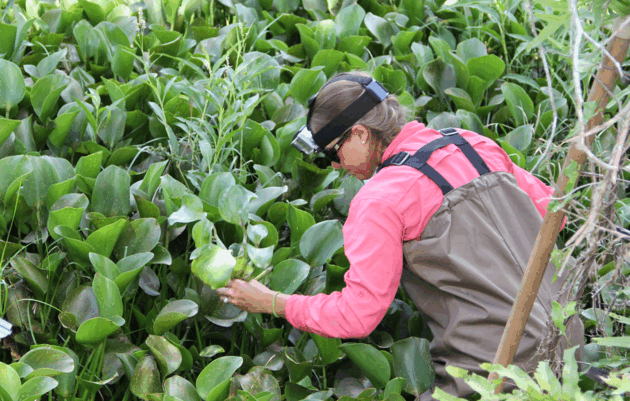The first few steps felt weird as clear, shallow water squished through my boots and dampened my jeans. With binoculars around my neck and cell phone camera in a Ziploc baggie in my pocket, I didn’t know what to expect during an off-boardwalk survey at Corkscrew Swamp Sanctuary, but I readied myself for whatever the swamp had to offer. Excited to see a different side of this special place, I looked forward to tagging along with the cadre of experts who assembled one December morning to take an inventory of unique plants that live here.
The 2.25-mile-long boardwalk makes it easy for Sanctuary visitors to keep their feet dry when experiencing the swamp and its 500-year-old bald cypress forest. While giant trees are the most obvious stars of the show here, the orchids, bromeliads (air plants), ferns, and other species that drape from their branches are the supporting cast. Called epiphytes, they grow on the rough surfaces of trees instead of in soil.
Some of these species can only live in tropical swamps, which provide the perfect recipe for their survival: a semi-permanent water source and a multi-layered tree canopy that work together to keep air temperature somewhat stable, provide protection from wind, and hold in humidity. An old-growth forest like the one at Corkscrew, with many trees nearing 20 feet in circumference, has an abundance of rough-bark surfaces upon which epiphytes can thrive.
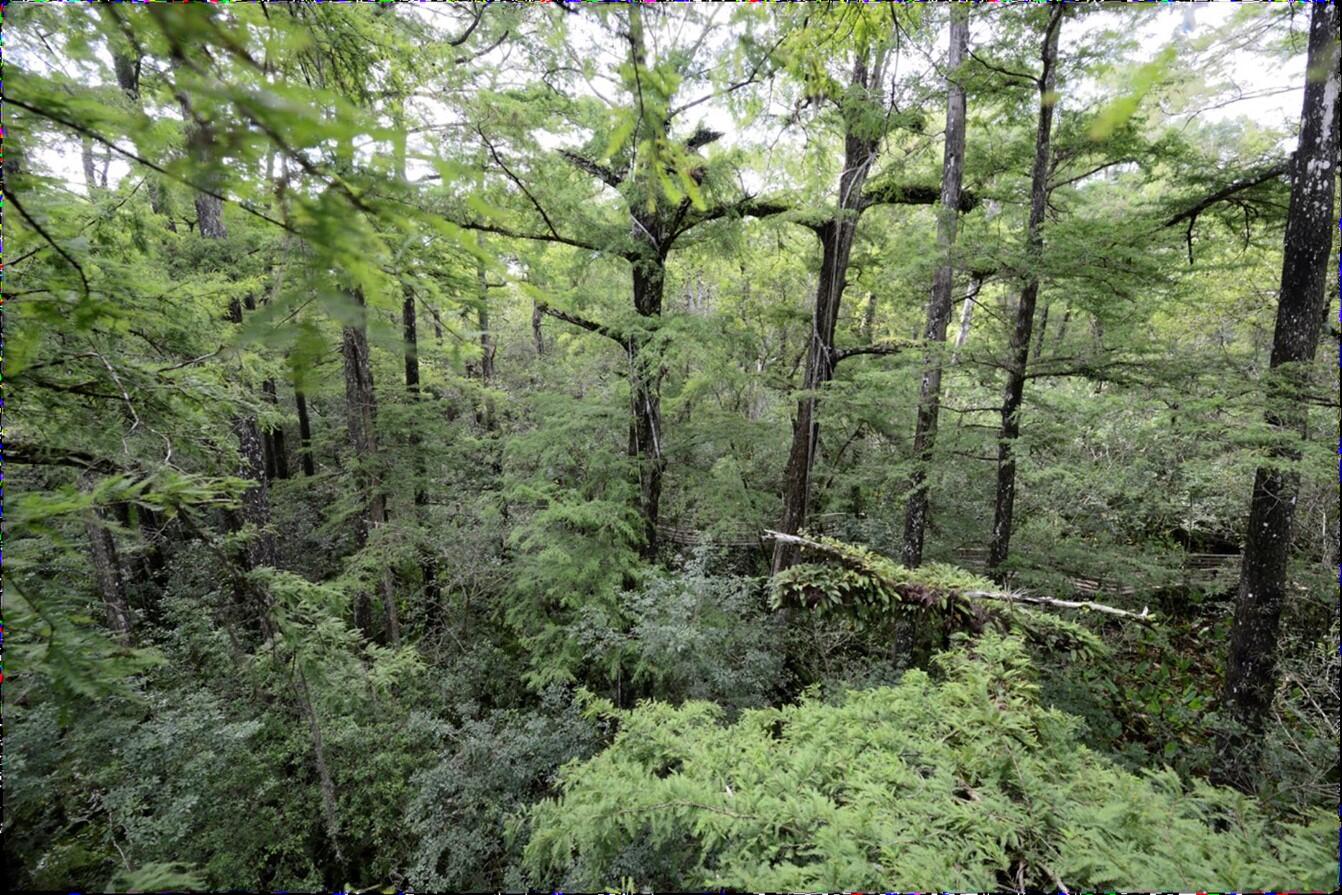
This survey was one of a dozen or more planned in 2023-24 to better explore and describe the diversity of rare and threatened epiphytes on conservation lands in the region, with a particular focus on locating new records of the rare ghost orchid. Despite their value to nearby neighborhoods as floodplains and firebreaks, swamps are vulnerable to impacts from development. As swamps disappear, so does the rest of the swamp community, including Florida’s native orchids, many of which are threatened or endangered.
The day dawned cool and cloudy and began in the Sanctuary parking lot with Shawn Clem, PhD, Audubon's Director of Conservation at Corkscrew Swamp Sanctuary, leading the discussion of past surveys, survey routes, and documentation methods. Scientists and other expert naturalists that day hailed from Florida Gulf Coast University, University of Florida, Northwestern University, Florida Panther National Wildlife Refuge, Fakahatchee Strand Preserve State Park, Naples Botanical Garden, Florida Fish and Wildlife Conservation Commission, Audubon Florida, and more. Together, they are working to enhance our collective understanding of this unique plant community on a regional scale to record a snapshot in time of each species present in each location.
Because so many epiphytes are threatened by collecting or poaching, these visiting professionals expressly agreed not to disclose any specific location information from the survey that may jeopardize individual plants or the Sanctuary’s biodiversity.
We began on an old roadbed that, in the early dry season, is flooded with several inches of water. The farther we walked into the swamp, the deeper the water became, making progress more difficult. The most experienced swamp walkers came prepared with PVC pipes or other tools to aid with balance. After fumbling over a few submerged logs, I grabbed the next thick stick I could find for a walking stick to keep from completely submerging myself, my pack, and my lunch.
Before long, a voice gleefully called out the first epiphyte of the survey—a Tillandsia utriculata, also known as the giant air plant. This bromeliad is an endangered species in Florida because, like many native bromeliads, it is threatened by the invasive Mexican bromeliad weevil which eats the heart of the plant and kills it. Giant air plants live 10 to 15 years before they reproduce. Some bromeliad species can create clones of themselves via a process called “pupping,” but the giant, once mature, puts all its energy into producing a single flower spike that blooms in June. Later that winter, it releases its seeds before perishing. Our group recorded two giant air plants on this survey.
A little later in the trek, we gathered to admire the flower of a very rare bromeliad, Tillandsia pruinosa, the fuzzy-wuzzy air plant. Yes, you read that correctly! This plant is aptly named as it is covered with fine hairs from top to bottom. In addition to its listing as a state-endangered species, the Institute for Regional Conservation (IRC) considers it “critically imperiled.”
With Lee and Collier counties the only places in Florida where fuzzy-wuzzy air plants live (they are also found in the Greater Antilles and southern Mexico through South America), U.S. population estimates are below 1,000 individual plants. Much to everyone’s surprise, the team spotted seven adults (with flowers, buds, or seed pods) and 16 sub-adult plants.
Mike Owen, a park biologist who recently retired from Fakahatchee Strand Preserve State Park, was the official record keeper and took copious notes on a tiny notepad of each species encountered.
Of the numerous orchids that are endangered in Florida, the list included Epidendrum amphistomum (dingy-flowered star orchid), Epidendrum rigidum (stiff-flower star orchid), and the very exciting Epidendrum floridense (Florida star orchid). With seedpods described as tiny beach balls, the Florida star orchid is a succulent plant found only in five counties in South Florida and considered “imperiled” by the IRC.
Ferns were everywhere. Osmunda spectabilis (royal fern) is listed as Commercially Exploited on the Florida Regulated Plant Index by the Florida Department of Agriculture and Consumer Services. The team also recorded Psilotum nudum (whisk fern), a species that is older than dinosaurs, and Acrostichum danaeifolium (giant leather fern), a long-lived perennial that can reach heights of 12 feet.
Owen’s notes included the approximate age, reproductive state, and other details for each target epiphyte documented on this survey, the first of several planned at Corkscrew Swamp Sanctuary this year. The group hopes that, by better understanding the existing populations in Southwest Florida, they can recommend improved practices for safeguarding epiphyte habitat and potentially rebuild wild populations of these disappearing plants for future generations.
Many of these and other epiphyte species can be seen in the cypress forest along the Sanctuary’s 2.25-mile boardwalk, including Corkscrew’s famed ‘super’ ghost orchid which is the largest and most prolific known ghost orchid in the world. To continue Audubon’s commitment to protecting the integrity of the natural habitat and its wildlife, the boardwalk is the only area of the Sanctuary regularly open to the public. Disturbing or collecting plants is strictly prohibited.
